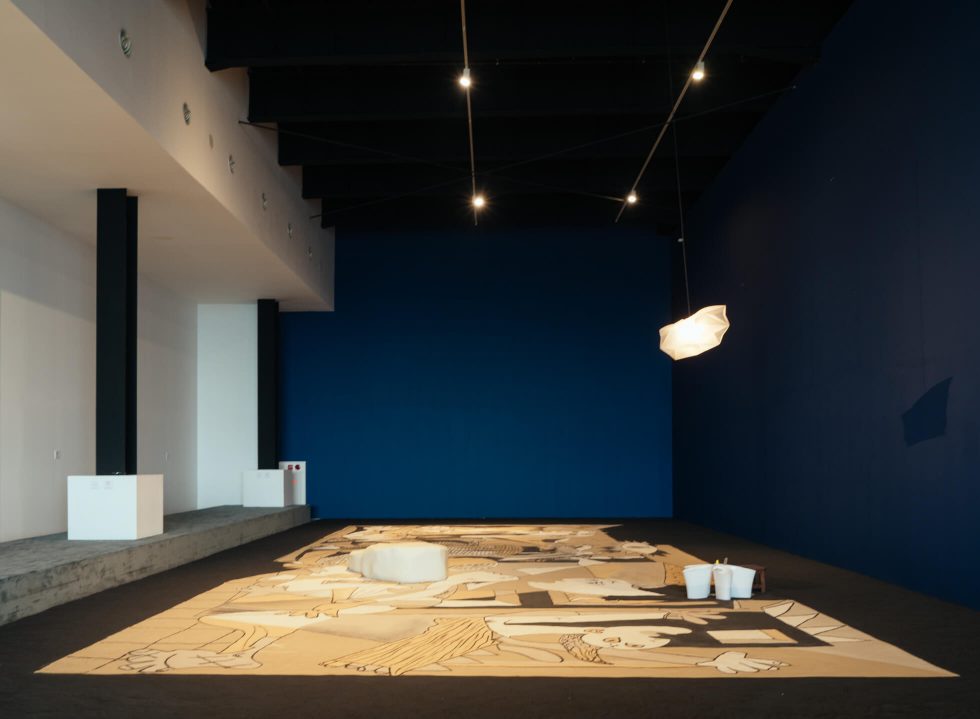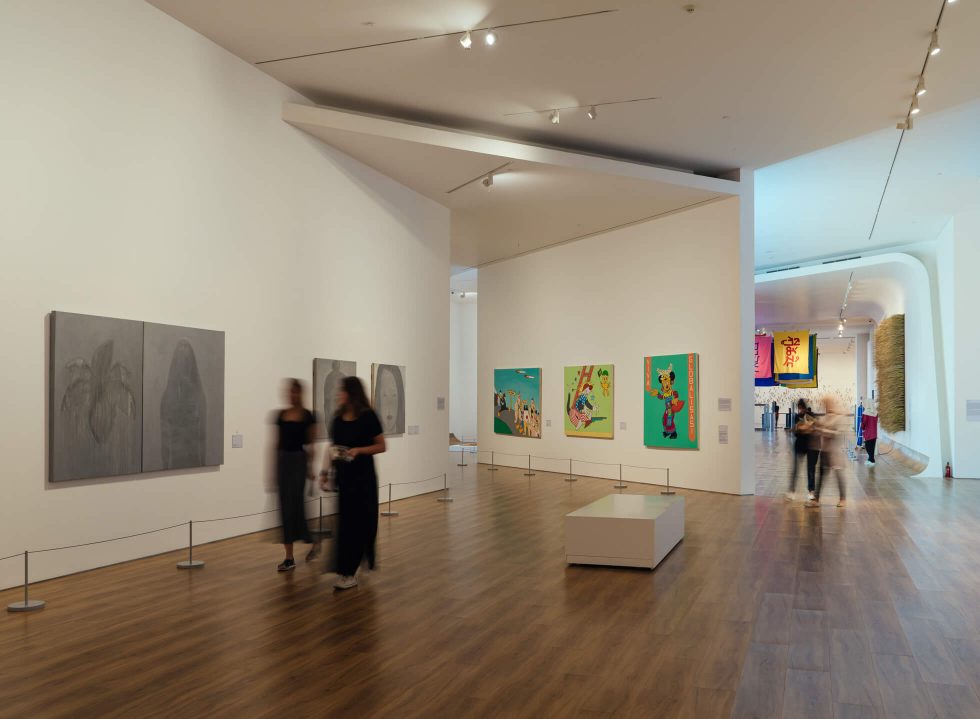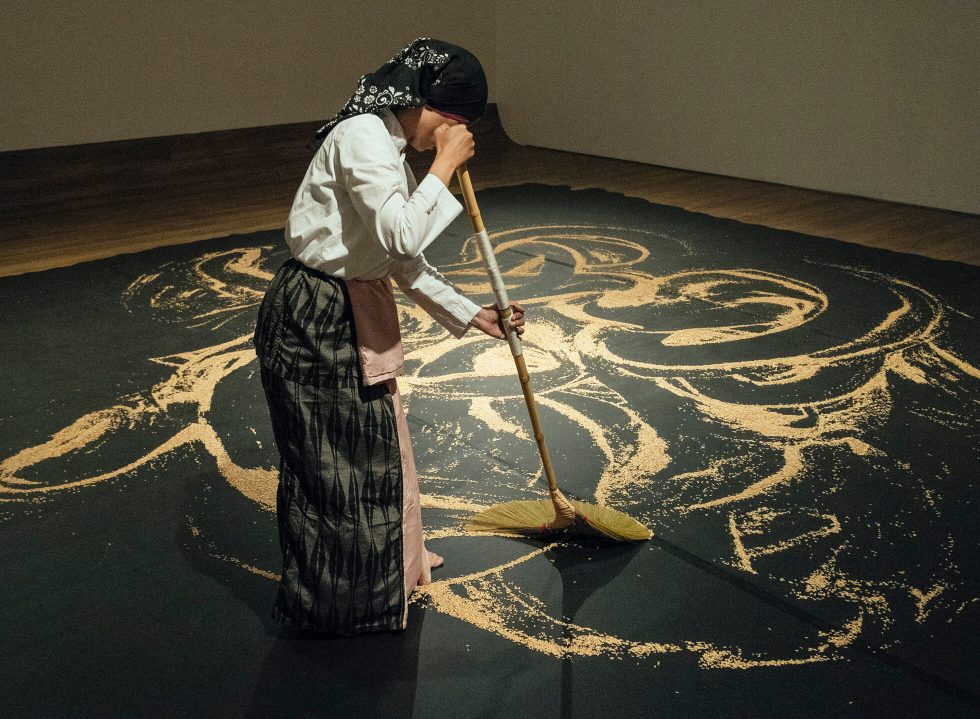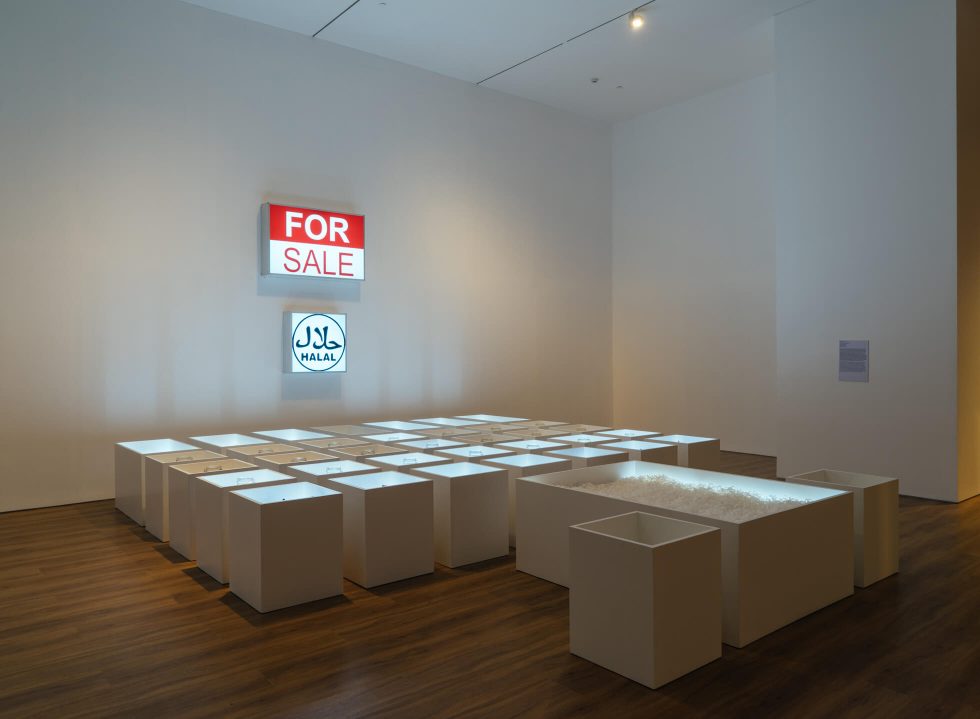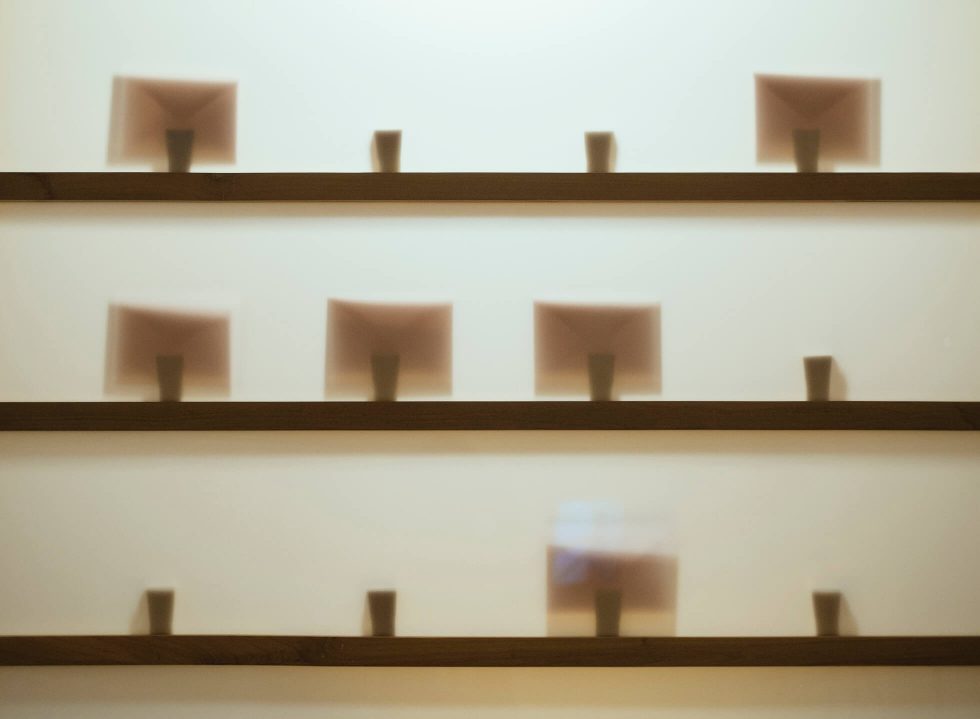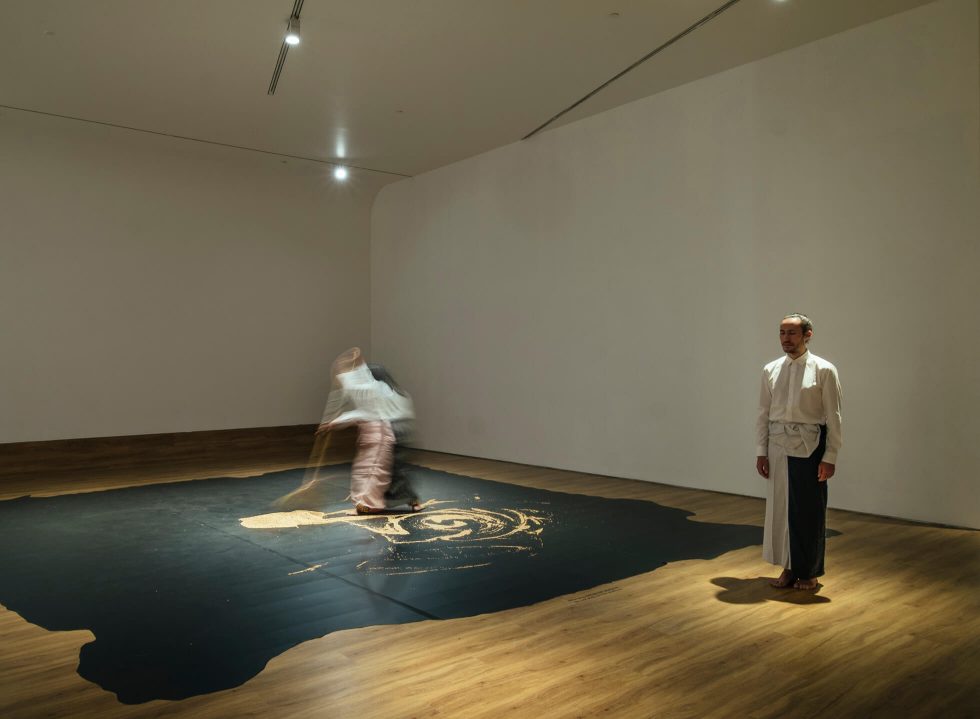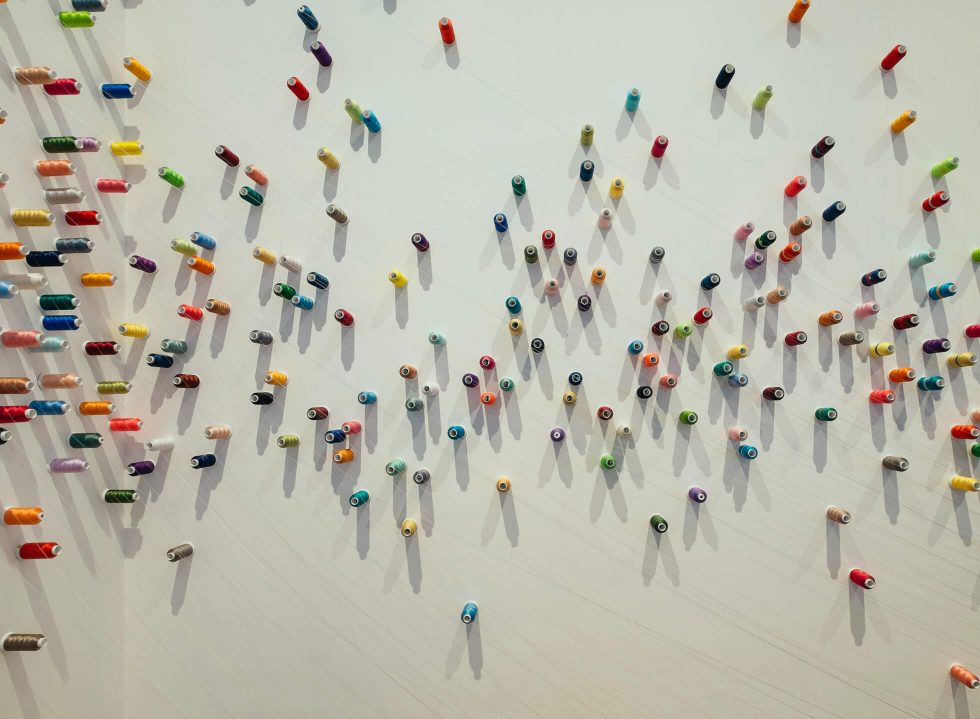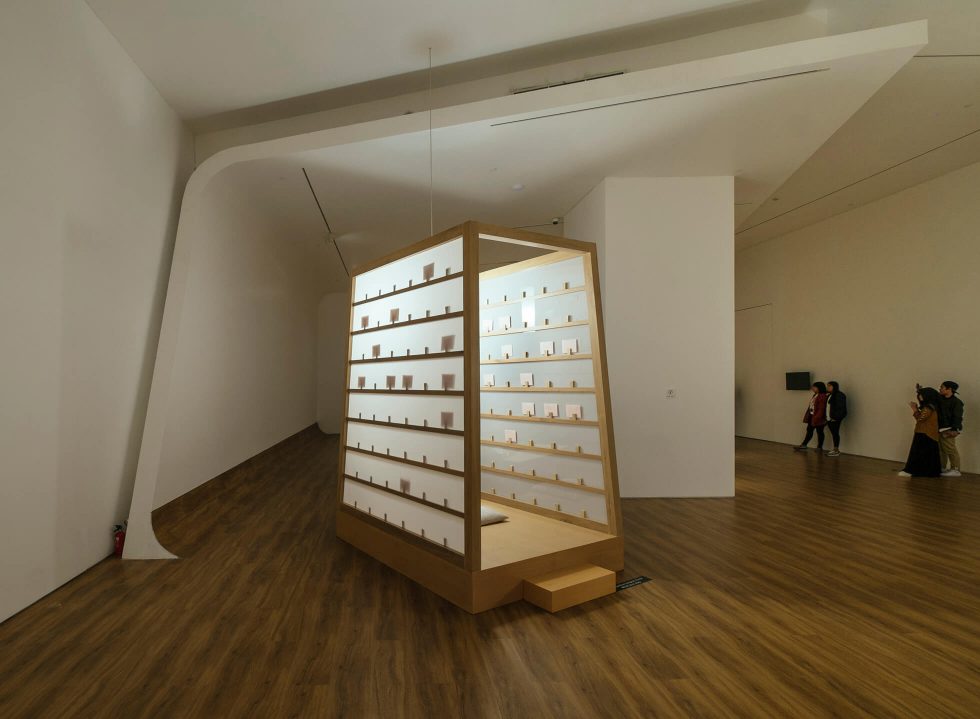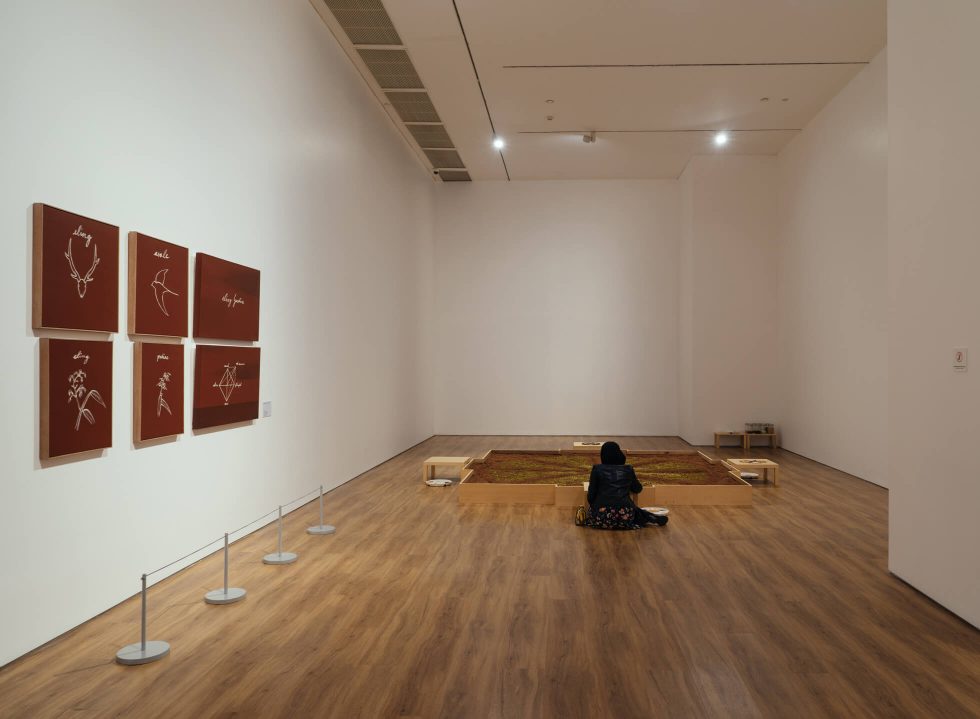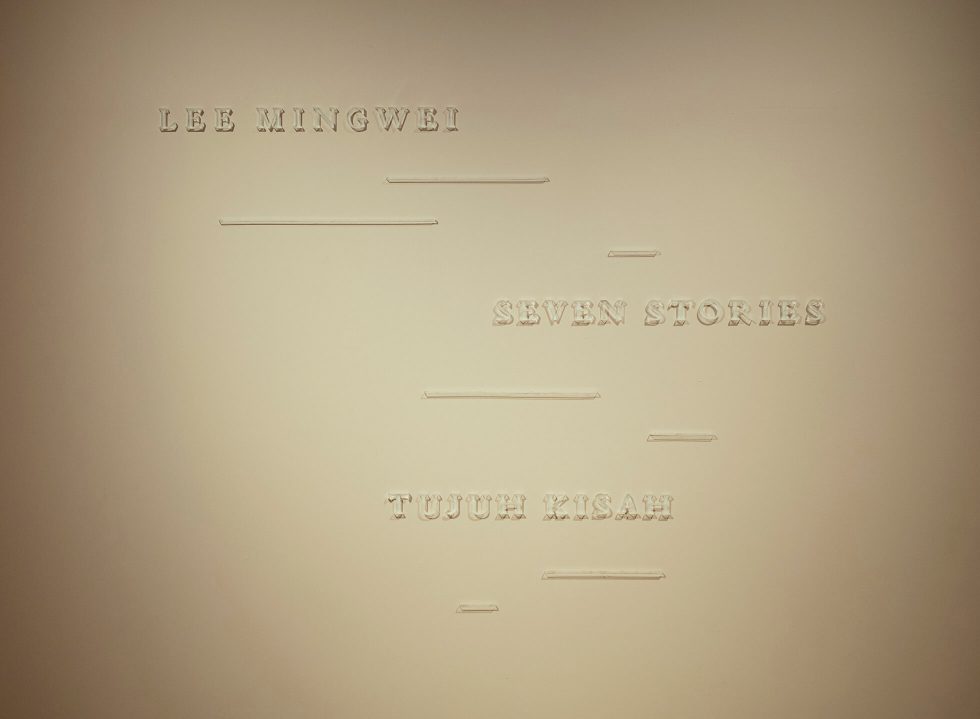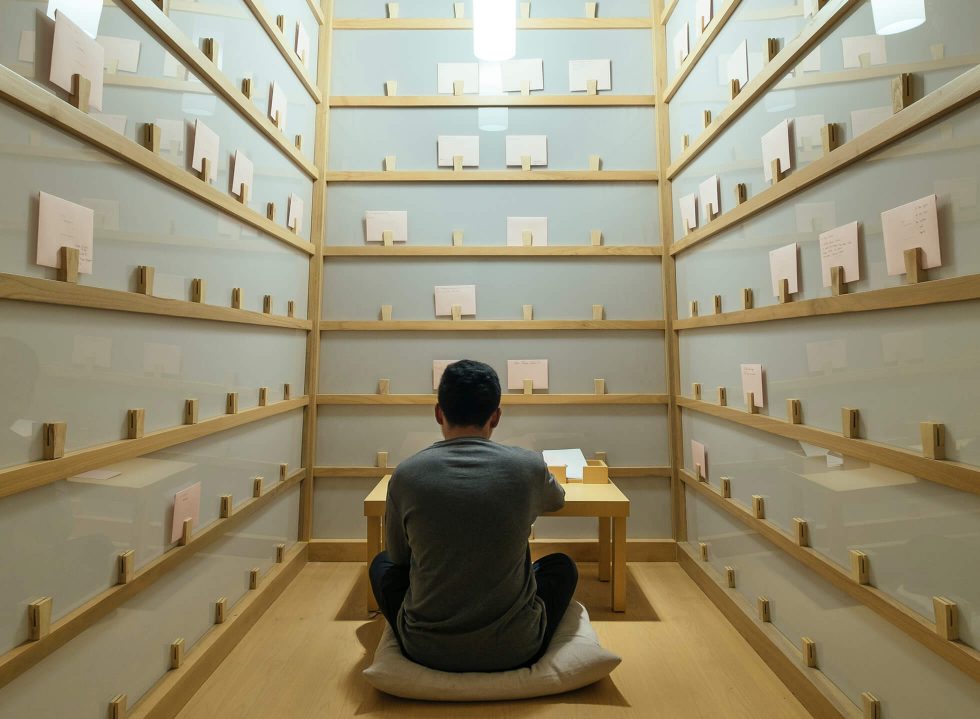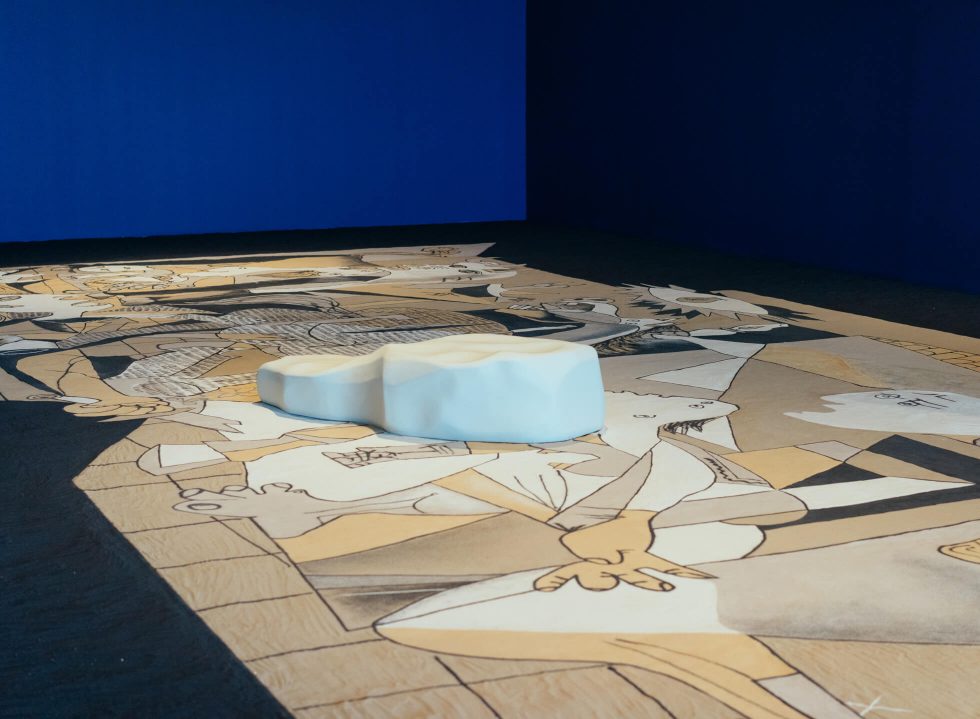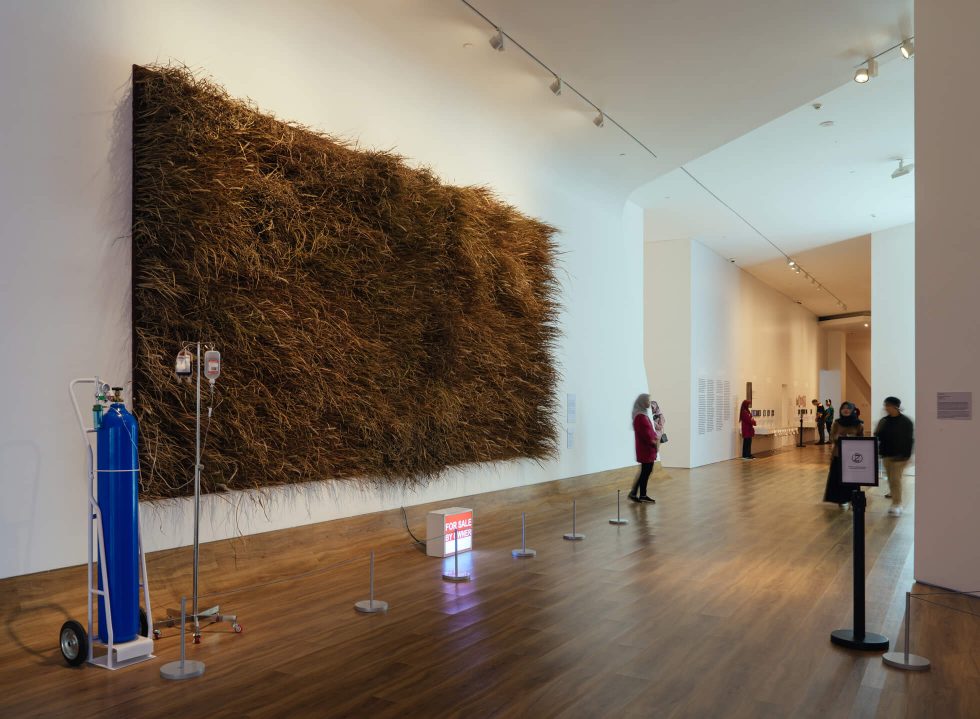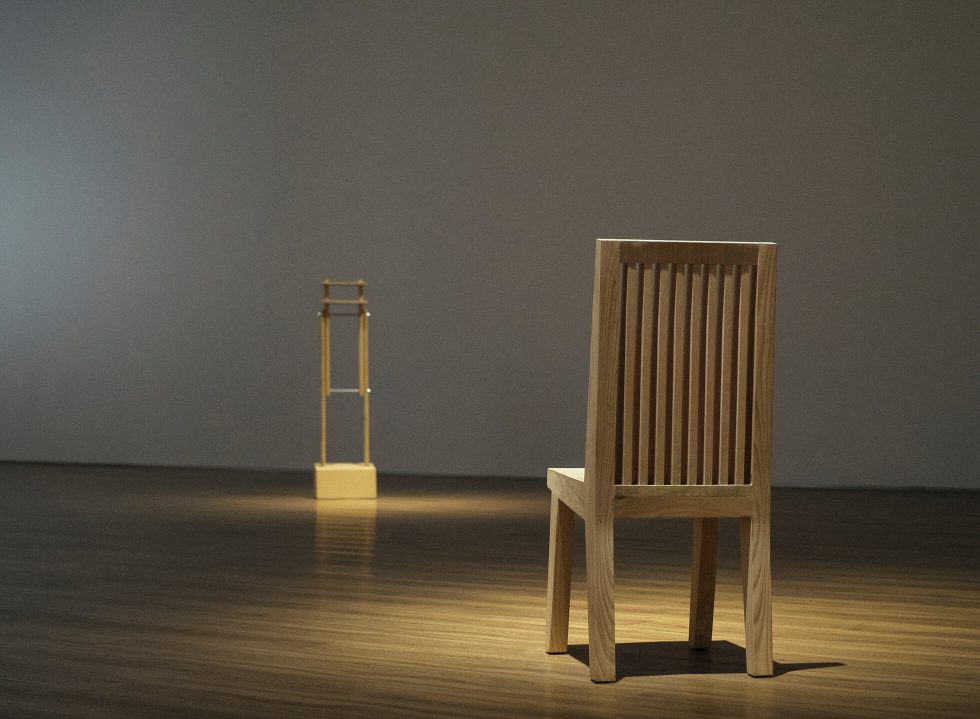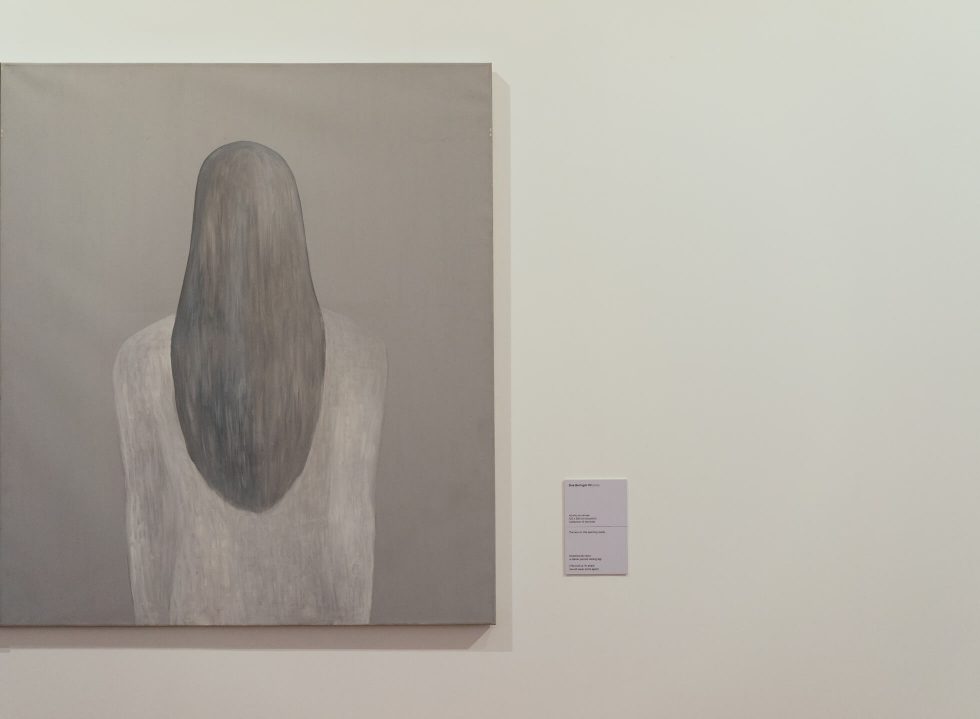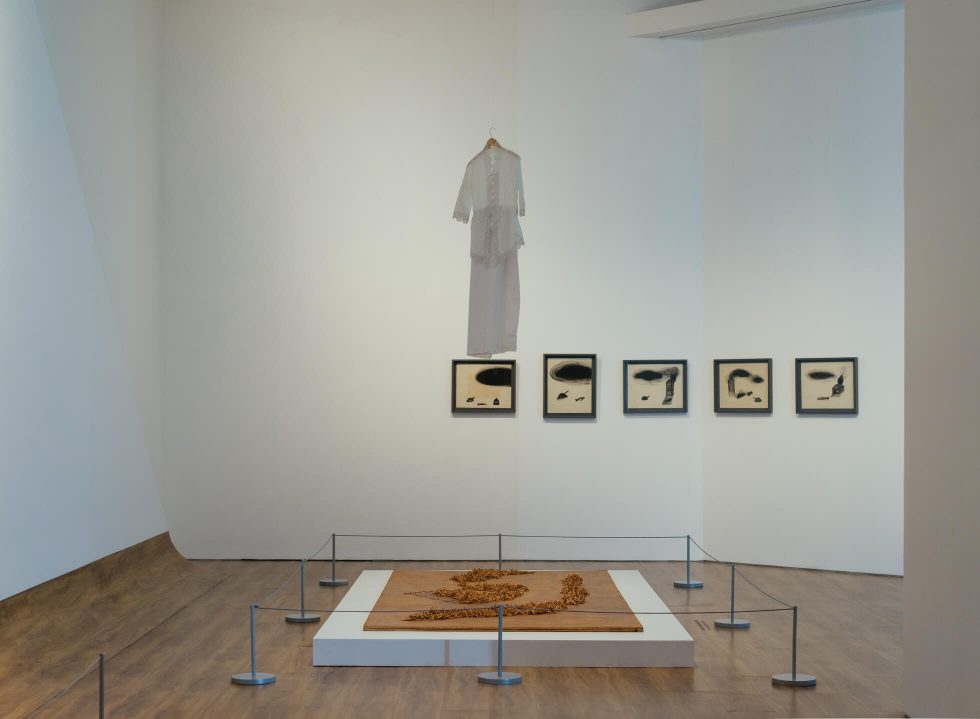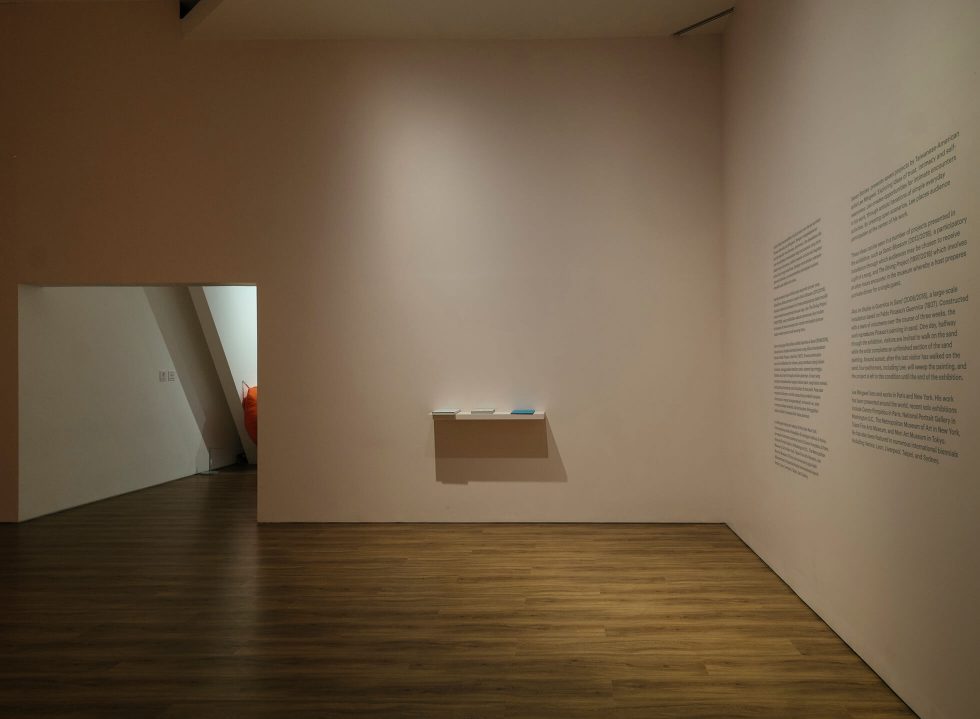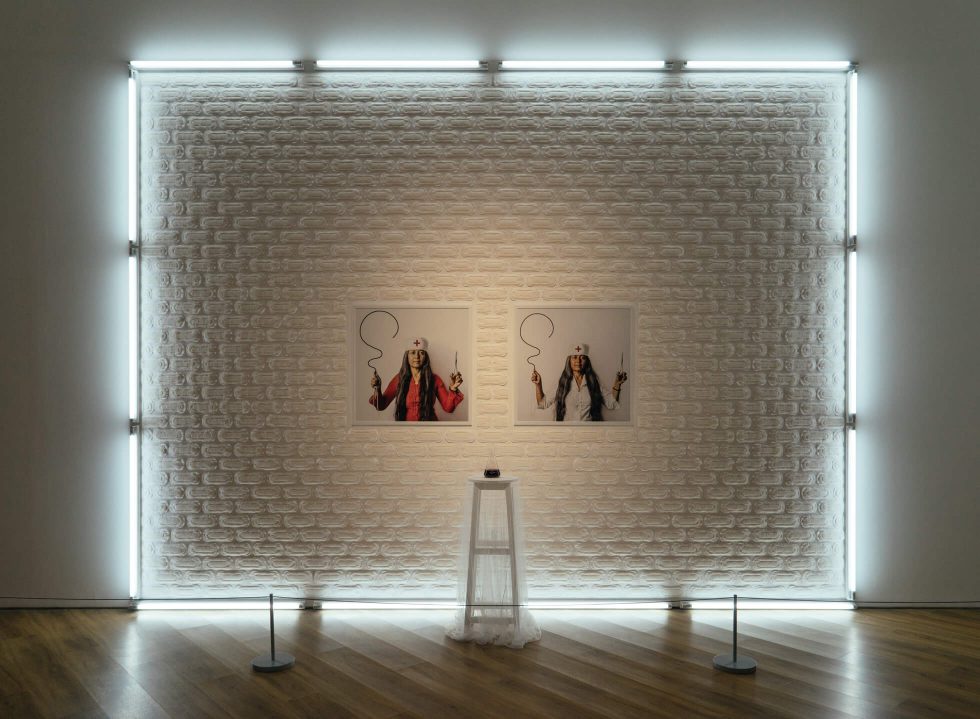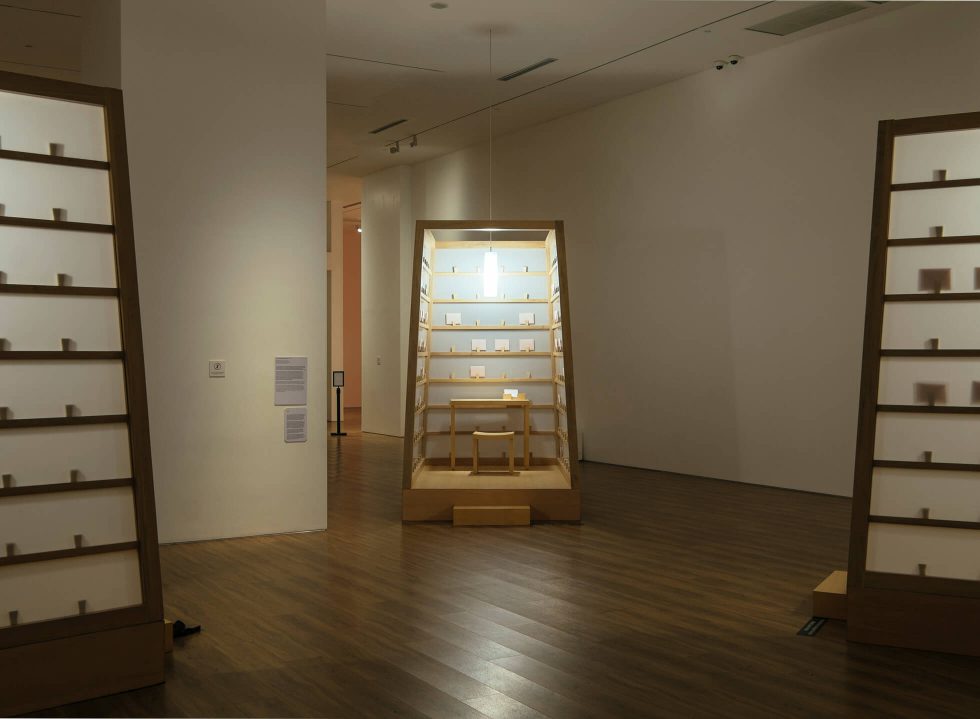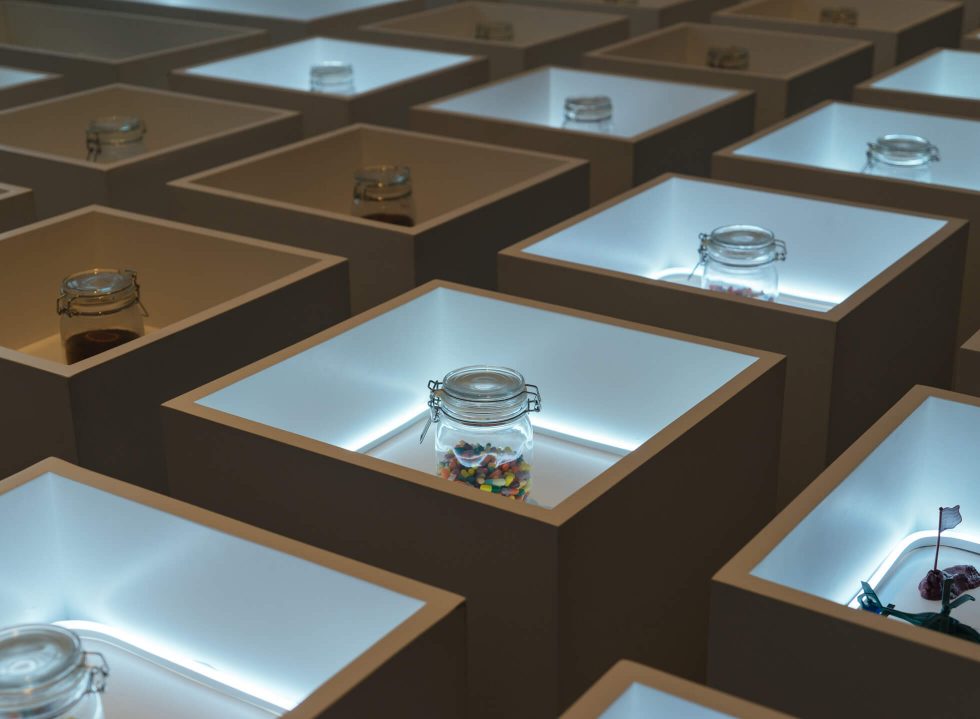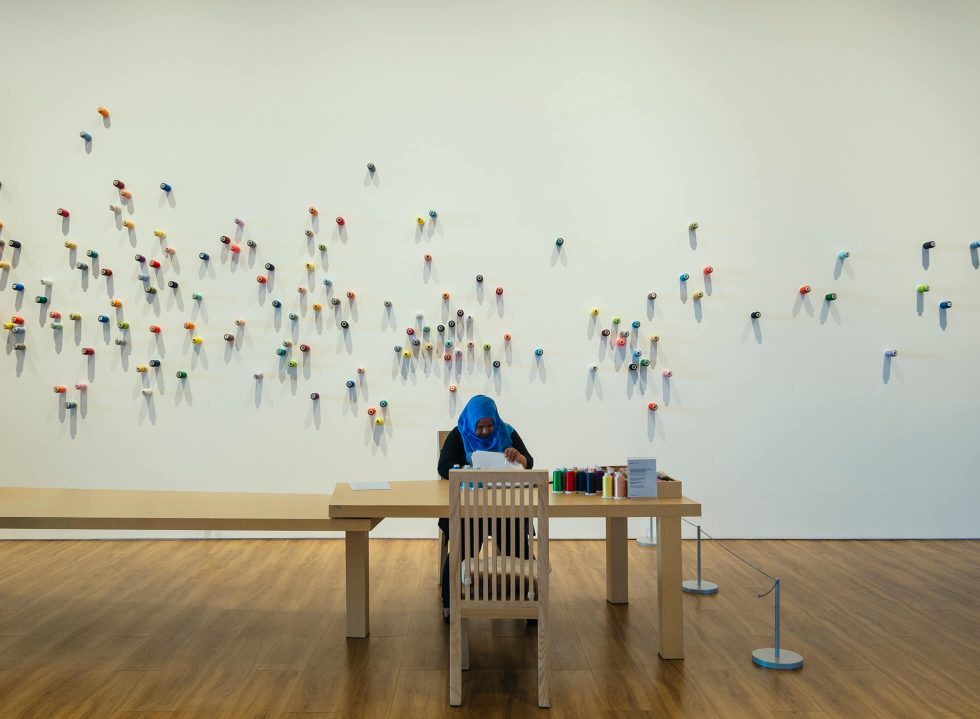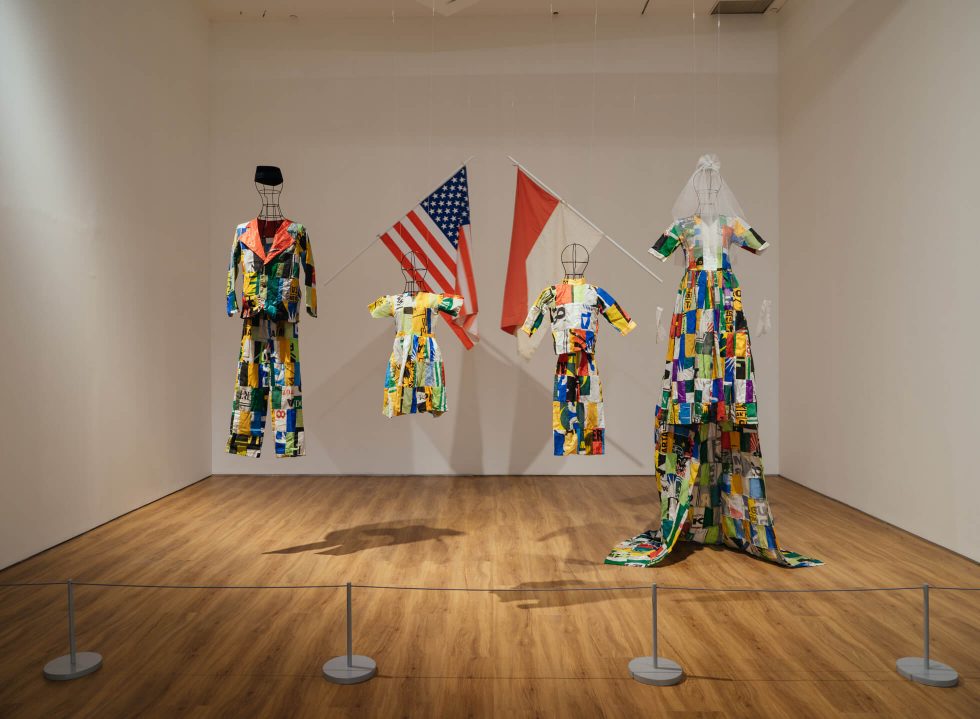After the highly successful exhibition of Yayoi Kusama’s Life is the Heart of a Rainbow earlier this year, Museum MACAN has returned to present three solo exhibitions highlighting the works of conceptual artists, namely Arahmaiani (Indonesian), Lee Mingwei (Taiwanese/American) and On Kawara (Japanese).
In “The Past has not Passed”, the exhibition is a survey of Arahmaiani’s works for the past three decades. With a strong focus on social activism, multiculturalism and the effects of globalisation, Arahmaiani is one of the key figures influencing the contemporary art scene of Southeast Asia. In Nation for Sale, the installation questions the price that comes with rapid development in Indonesia. While in Lingga-Yoni, Arahmaiani combined the imagery of lingga-yoni, a symbol of virility and fertility in Hinduism, with Jawi alphabets, Arabic-Malay script that was influenced by Hindu-Buddhism culture on Java Island.
If Arahmaiani’s “The Past has not Passed” casts a wide net on the influences between cultures and its politics, Lee Mingwei’s “Seven Stories” dives deep into the emotional interpersonal relationship between humans. Through seven works, most of which involves the participation of viewers, the artist employs simple daily activities as his form of expression. In particular, The Dining Project, invites a single visitor for a private dinner in the museum during the after-hours. In Sonic Blossom, a singer gifts Lieder (art songs) to a random visitor.
Rounding off the trinity of the exhibitions is “One Million Years” by On Kawara, where one male and female volunteers take turn reading out dates from one-million period before the artist’s work and the one-million years after it.
At first glance, these three solo exhibitions may differ greatly from one another, but they all offer a meditative counter to the previous exhibition of Yayoi Kusama, where they hone in on the active participation of each visitor that is further amplified by their own personal, and private, experience.
